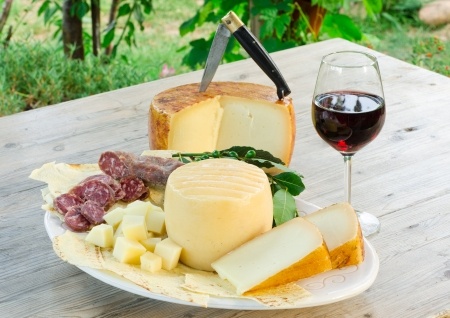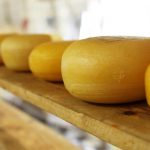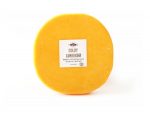
Sardinia is known for sheep. In 2017 there were about 1.6 million people on the island but there are still more sheep. Apart from shearing for wool and lazing in the Sun, there is an awful lot of sheep’s milk to use up. The Romans who settled the island after they had defeated the Carthaginians appreciated the fact that with all the fine dairy pasture, cheese from the milk was the order of the day.
We often think of Parmesan, Gorgonzola and Dolcelatte as top Italian cheeses but in fact Sardinia’s claim to fame is Pecorino.
Pecorino
If you are looking for a parmesan substitute in something like pesto then pecorino is the one to turn to. Unlike Parmesan which is a hard cows cheese, Pecorino is a mature and salted sheep’s milk cheese. The word incidentally is derived from the Italian word for ‘ewe’ which in turn derives from latin for a large group of animals. Clearly, sheep usually comes in large flocks !
The cheese doesn’t need as long to age as Parmesan. The aging process is about five to eight months. It seems that the shorter process for maturing the cheese creates a sharpy, overly tangy flavour.
It makes for a fine pasta sauce. It also makes for a great risotto and you will often see it in dishes like cacio e pepe. The quality of pecorino depends on the grass fed on by the sheep and indeed the level of salinity in the grass and the process of manufacture all contribute to its quality.
Casu Axedu
The weirdest cheese is probably Casu Axedu. It is a fresh cheese found everywhere on the island. In ancient times, shepherds would convert the readily available curd into a foodstuff available for immediate eating. In most cheese processing, the curd which forms from a lactic acid fermentation is cut into large pieces and allowed to acidify further. This is then ready for eating. It reminds us of Feta from Greece and Cyprus but these small cubes are ideal for salads because of the sharp and salty taste.
Casu Marzu
If you want to know about the general process of cheese making take a look at this article.



Leave a Reply